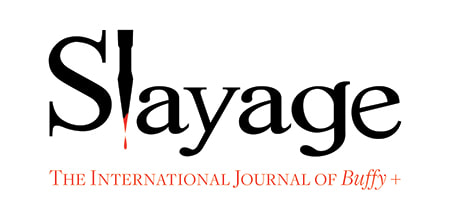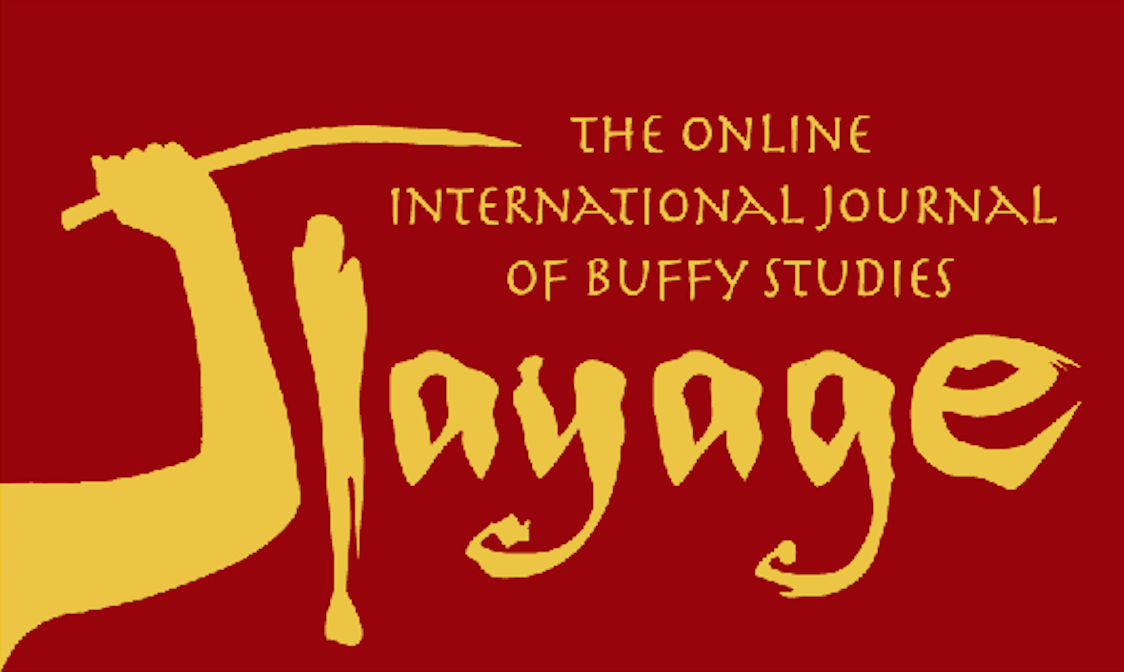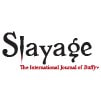|
ISSN 1546-9212
|
|
Buffy died twice; this journal has now been re-born three times. Its newest name and different incarnation is as Slayage: The International Journal of Buffy+. As some of you will recognize, the title harks back to the original journal title of 2001 (Slayage: The Online International Journal of Buffy Studies) as well as the text that started us. The name Buffy recalls the significance of scholarly examinations of feminism, but Slayage is much more. The “plus” is meant to be a sign of inclusivity, both for scholars and texts.
The “plus” is also meant to reference all the works that are genealogically connected to Buffy. How much of Buffy is there in David Greenwalt and Jim and Lynn Kouf’s Grimm? And is there nothing of Marti Noxon’s Buffy in Noxon’s Camille Preaker of Sharp Objects? And ought we to say (as well as Gillian Flynn’s) Amy Adams’ Camille Preaker? What about Amy Adams’ unnerving performance of another Southerner in Buffy (“Family,” 5.6)? Does Christophe Beck’s music for WandaVision have no relation to his music for Buffy? The connections might be intertextual (e.g. Veronica Mars, Maharakshak Devi, Supernatural) or they might simply be the creators themselves. We posit that there will be a bond of cutting-edge quality among such works.
In addition, the plus mark indicates the “fuzzy set” of which Buffy is the center. Drawing on Brian Attebery's description in Strategies of Fantasy, the fuzzy set is “defined not by boundaries but by a center.” What Slayage is interested in is a fuzzy set with the TV series Buffy the Vampire Slayer at its center, and (primarily visual) media more or less resembling Buffy forming the periphery. This set does not yet have a good name of its own, but we know it when we see it. A scholar might use Buffy as a yardstick to tell us why we should consider their chosen topic to be part of this fuzzy set. Is your object of study “high stakes TV” with a kick-ass young female lead? A movie or book series concerned with the frequent irruption of the supernatural into the mundane? Are snarky humor and linguistic play part of the appeal of the source text? Strong characterization, an emphasis on relationships, and long story arcs spanning a season or more? Moral dilemmas, stylish but affordable boots, and starship captains with tight pants? The “fuzzy set” provides coherence without setting firm boundaries.
The “plus” specifically alludes to LGBTQIA+, too, one of the important touchstones of the original series. The complexities of queerness are part of the intriguingly nuanced nature of many of these texts. The Tara/Willow storyline was both groundbreaking and, with Tara’s death, ultimately controversial. Scholarship explored this subject from many angles; the response to this LGBTQIA+ storyline is an illustration that our analyses should be scholarly critiques, not just hagiography. The journal was established to provide a venue for writing about good work, but good works are not perfect, and scholarship should strive to see clearly. This journal will not publish articles about texts that would be a waste of viewers’ or readers’ time; on the other hand, it will continue to not only praise but also problematize those texts about which it does publish. LGBTQIA+ texts and scholars have been an important part of this clear-sighted assessment, and Slayage would be strengthened by further contributions in light of contemporary scholarship. How do we now see Dru and Darla? Does Felicia Day’s Mag of Dollhouse connect at all with her Charlie in Supernatural? Is asexuality visible anywhere in these texts? How might current scholars address the presentation of J. August Richards’ Gunn in the light of his coming out as a gay man? Intersectional scholarship should be encouraged. That last example leads to another point. Importantly, the “plus” is meant to refer to the need to counteract a “minus”—that is, the scarcity of Latinx and Black, Indigenous, Person of Color representations in Buffy (the Original Sin of the Buffy text) as well as problematic representations in that and related texts. Since Kent Ono’s 2000 essay “To Be a Vampire on Buffy the Vampire Slayer,” scholars have been examining these matters. (See the Oxford University Press Online Bibliographies on Buffy and on Whedon.) However, a great deal remains to be done—again, not just on Buffy but also on related texts. We can revive Kendra in our scholarly discussions, but we should not stop there. What can we say about Monica Owusu-Breen? What about the multiple roles of Maurissa Tancharoen? What about Gina Torres and Harry Lennix? And who will speak about these matters? Will you? Back in 2001, David Lavery wrote that the journal would continue “for as long as interest warrants.” With this new name and new focus, we reiterate that pledge. Slayage (ISSN 1546-9212) is an open-access, blind peer-reviewed, MLA-indexed publication and a member of the Directory of Open Access Journals. journal. All content is available at no cost, in downloadable, full-text PDFs. There is no submission or publication fee for authors.
|




